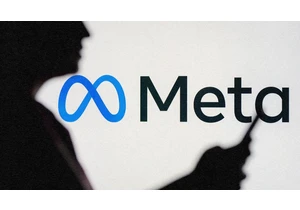In 1894, Gallaudet University, the storied D.C. institution known for educating generations of deaf and hard of hearing students, invented the football huddle as a way to keep other teams from spying on their American Sign Language (ASL) discussions.
Last month, the university debuted another football innovation, testing a helmet developed with AT&T that lets coaches visually signal plays to athletes through a 5G connection. When head coach Chuck Goldstein needed to communicate a play during Gallaudet’s home game against Hilbert College on October 7, he was able to select it from a virtual playbook on a tablet. That, in turn, relayed the information to an augmented reality display inside quarterback Brandon Washington’s helmet.
“I was able to see the play calls clearly,” wrote Washington in an email to Fast Company. “What I liked best was Coach Chuck [Goldstein] being able to get my attention when needed and quickly.”
In addition to displaying plays, the helmet was able to display an alert telling Washington when to look to Goldstein for further messages via ASL. That helped combat one of the disadvantages that deaf and hard of hearing players have in the game: not being able to know when a coach is trying to get their attention without continually looking between the field and the sidelines.

“The biggest concern I have is not being able to get the attention of the quarterback,” says Goldstein. “This helmet gave us that opportunity to get the quarterback’s attention.”
Gallaudet beat Hilbert 34-20 that day, and the technology has already been featured in an AT&T commercial, but the digital helmet won’t immediately be making an appearance in future games. It was so far only authorized by the NCAA for a one-time test, after about two years of development and testing by AT&T and Gallaudet. Kellyn Smith Kenny, AT&T’s chief marketing and growth officer, says the project began about two years ago, as people at AT&T—a company with a long history of offering technology to help deaf people communicate—observed that pro football players normally receive audio communications from coaches via radio.
“It presents a gap for the deaf and hard of hearing athletes,” she says. “And we wanted to tackle that.”

The helmet went through several iterations as AT&T and Gallaudet worked to develop a version that was lightweight, comfortable and, of course, compatible with safety standards.
“Before we put the helmet on anybody’s head, we did crash testing to make sure that it was completely safe,” says Kenny.
The helmet that debuted on the field, built by sporting-goods maker Riddell, first saw field action in practices and scrimmages, where players verified that the display didn’t interfere with their ability to focus on the game. And the 5G connectivity helped guarantee that there was, effectively, zero delay in communications, she says.

“There is literally no time between when the coach sends the play and when the player sees the play,” she says. “And, as you know, in sports, seconds—sometimes milliseconds—matter.”
The company is working with the NCAA to see how the technology might be used in future games, as well as speaking with people from other fields in which helmets are worn, like emergency response, to see how the technology might be deployed.
Goldstein says he imagines the technology could be great for deaf and hard of hearing players in middle and high school, who often end up sticking to defense due to lack of effective communication with coaches on mostly hearing teams. For as hard as they train and play, deaf and hard of hearing players can still be at a distinct disadvantage when it comes to getting signals from coaches and officials.
“I wish we could use this helmet all the time,” said Washington. “I think it would help us level the playing field.”
Autentifică-te pentru a adăuga comentarii
Alte posturi din acest grup

“Meta profits, kids pay the price,” was the message delivered by dozens of grieving families at the doors of Meta’s Manhattan office on Thursday.
Forty-five families traveled from

The world’s auto industry is getting a shake-up from Chinese automakers that

There’s Blue Sky and then there’s Bluesky.
Blue Sky, a paper goods company

Google’s profits soared 50% in this year’s opening quart

One of the central arguments in the ongoing antitrust trial against G

The AI revolution is redefining business and tech leadership—and no one is standing more squarely on the front lines than product leaders.
Once seen as a behind-the-scenes role, the CPO

It has taken a little over five months and has been
